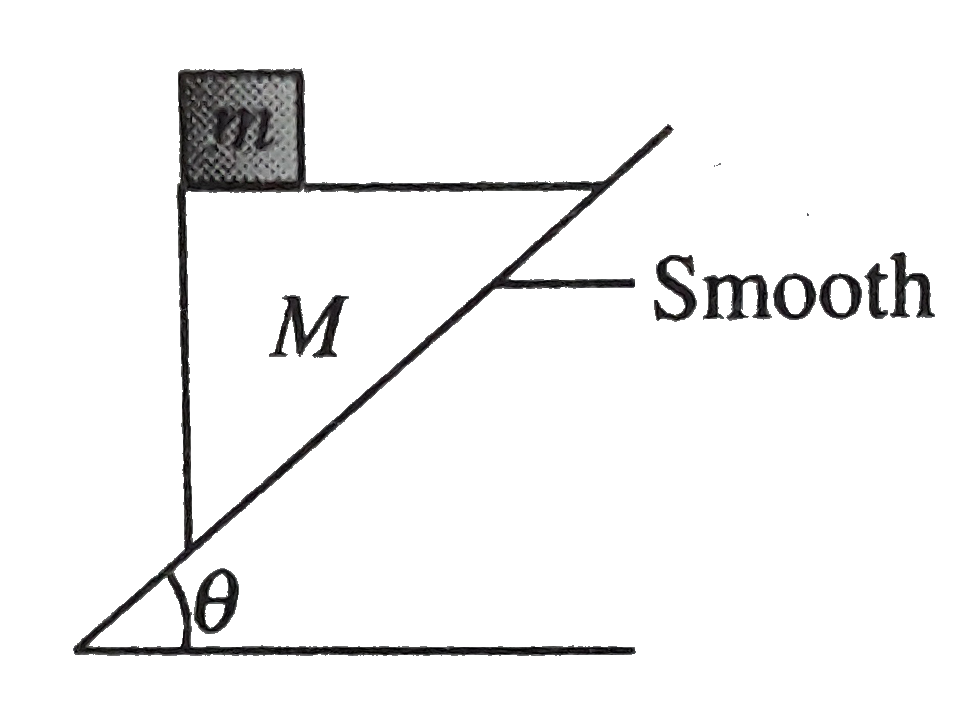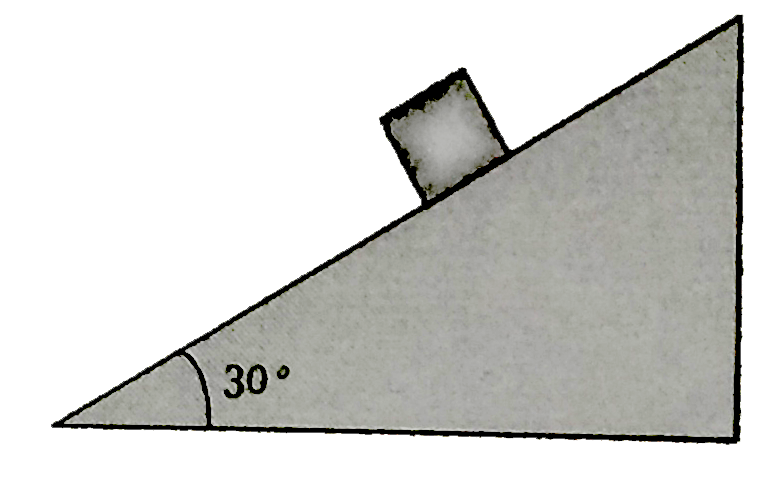A block released from rest from the tope of a smooth inclined plane of angle of inclination θ1=30∘ reaches the bottom in time t1. The same block, released from rest from the top of another smooth inclined plane of angle of inclination θ2=45∘ reaches the bottom in time t2. Time t1 and t2 are related as ( Assume that the initial heights of blocks in the two cases are equal ).
t2t1=1√2
t2t1=12
t2t1=1
t1t2=12
The correct Answer is:A
To solve the problem, we will analyze the motion of the block on two different inclined planes with angles of inclination θ1=30∘ and θ2=45∘. We will derive the relationship between the times t1 and t2 taken by the block to reach the bottom of the two planes.
Step 1: Determine the distance traveled down the inclined planes
Given that both blocks are released from the same height h:
1. For the first inclined plane (angle θ1=30∘):
L1=hsin(30∘)=2h
2. For the second inclined plane (angle θ2=45∘):
L2=hsin(45∘)=h√2
Step 2: Calculate the acceleration of the blocks
The acceleration of the block down the inclined plane is given by:
a=gsin(θ)
1. For the first inclined plane:
a1=gsin(30∘)=g⋅12=g2
2. For the second inclined plane:
a2=gsin(45∘)=g⋅1√2=g√2
Step 3: Apply the equation of motion to find time taken
Using the equation of motion s=ut+12at2 where u=0:
s=12at2
Thus, we can rearrange to find time t:
t=√2sa
1. For the first inclined plane:
t1=√2L1a1=
⎷2⋅2hg2=
⎷4hg2=√8hg
2. For the second inclined plane:
t2=√2L2a2=
⎷2⋅h√2g√2=
⎷2h√2g√2=√4hg=√4hg
Step 4: Find the ratio t1t2
Now we can find the ratio of the times:
t1t2=√8hg√4hg=√8hg⋅g4h=√2=t1t2
Thus, we can express t2 in terms of t1:
t2=t1√2
Final Result
The relationship between t1 and t2 is:
t2=t1√2
L1=hsin(30∘)=2h
L2=hsin(45∘)=h√2
a=gsin(θ)
a1=gsin(30∘)=g⋅12=g2
a2=gsin(45∘)=g⋅1√2=g√2
s=12at2
Thus, we can rearrange to find time t:
t=√2sa
t1=√2L1a1=
⎷2⋅2hg2=
⎷4hg2=√8hg
t2=√2L2a2=
⎷2⋅h√2g√2=
⎷2h√2g√2=√4hg=√4hg
t1t2=√8hg√4hg=√8hg⋅g4h=√2=t1t2
t2=t1√2
The relationship between t1 and t2 is:
t2=t1√2
Similar Questions
A block is released from rest from point on a rough inclined place of inclination 37∘. The coefficient of friction is 0.5.
View SolutionA body is released from the top of a smooth inclined plane of inclination θ. It reaches the bottom with velocity v. If the angle of inclina-tion is doubled for the same length of the plane, what will be the velocity of the body on reach ing the ground .
View Solution
Knowledge Check
A block released from rest from the top of a smooth inclined plane of angle θ1 reaches the bottom in time t1. The same block released from rest from the top of another smooth inclined plane of angle θ2 reaches the bottom in time t2 If the two inclined planes have the same height, the relation between t1andt2 is
At2t1=(sinθ1sinθ2)1/2Bt2t1=1Ct2t1=sinθ1sinθ2Dt2t1=sin2θ1sin2θ2An object of mass m is released from rest from the top of a smooth inclined plane of height h. Its speed at the bottom of the plane is proportional to
Am0BmCm2Dm−1
A triangular prism of mass m placed on it is released from rest on a smooth inclined plane of inclination θ The block does not slip on the prism. Then

View SolutionThe time taken by a block of wood (initially at rest) to slide down a smooth inclined plane 9.8 m long (angle of inclination is 30∘) is

View SolutionA spherical object of mass m and radius R is released from the top of a smooth inclined plane of height h and angle of inclination is 37° . The radius of gyration of the object is K. The speed of object at the bottom of inclined plane is
View SolutionA body is slipping from an inclined plane of height h and length l . If the angle of inclination is θ , the time taken by the body to come from the top to the bottom of this inclined plane is
View SolutionA body of mass m and radius r is released from rest along a smooth inclined plane of angle of inclination θ. The angular momentum of the body about the instantanoues point contact after a time t from the instant of release of equal is :
View SolutionA block is released from the top of a smooth inclined plane of inclination θ as shown in figure. Let υ be the speed of the particle after travelling a distance s down the plane. Then which of the following will remain constant ?

View Solution
